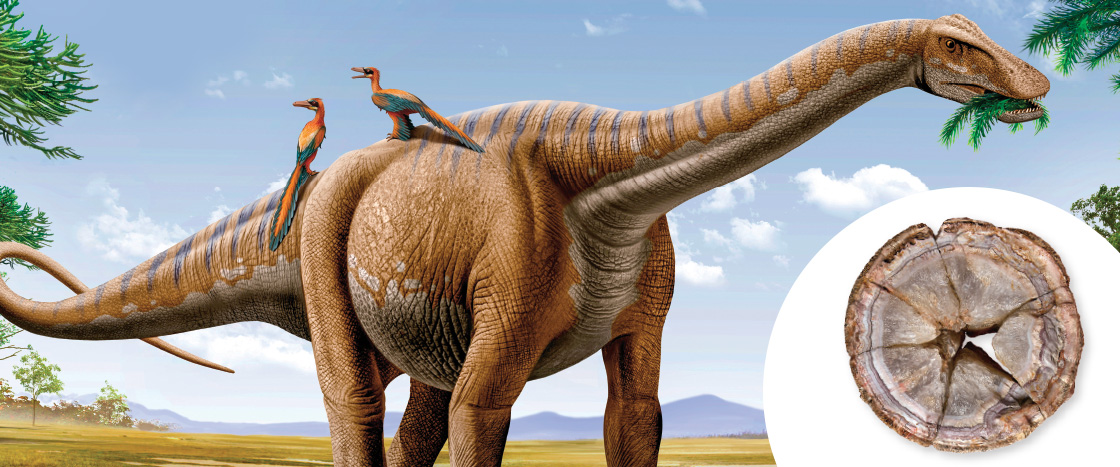Robin Hansen is an expert on minerals, or solids with crystal-like structures. A few years ago, she noticed an unusual rock in the Natural History Museum in England. It was rough on the outside with pink and white crystals inside. But it puzzled Hansen. She thought it looked like a dinosaur egg.
When dinosaur experts studied the object, they discovered that Hansen was right! The dino egg had been fossilized, or preserved in rock. Its shape and size suggest that it was laid by an enormous, long-necked dinosaur called a titanosaur.
Scientists think it was then buried in a volcanic eruption about 67 million years ago. Water and minerals seeped inside the egg’s shell and hardened. Over time, the shell and soft insides wore away and the water evaporated. The minerals were left behind, filling the egg’s shape with crystal.
The fossilized egg was discovered in India 175 years ago. It mistakenly sat in the museum’s mineral collection all that time. “It is only now that we recognized it as something extra special,” says Hansen.

